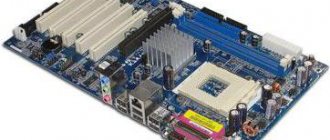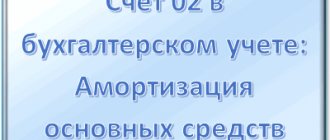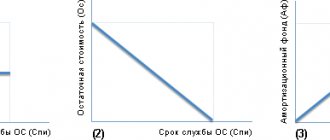By Order of the Ministry of Finance of Russia dated September 17, 2020 No. 204n, Federal Accounting Standard 6/2020 “Fixed Assets” was approved. In general, it comes into force on January 1, 2022. However, the organization may decide to apply it before the specified date, that is, from 2021.
Compared to the current PBU 6/01 (which will become invalid as of January 1, 2022), the new Standard both introduces many new concepts and gives the organization greater freedom of action in a given situation.
Therefore, in my opinion, some of the provisions can be put into effect as early as 2021, but some can be waited until 2022 (or not applied at all).
It is quite difficult to analyze all the “chips” of the new FSBU within the framework of one publication, so I offer readers an analysis of only a few innovations, which (again, in my opinion) can be applied starting in 2021, having secured this in your accounting policies.
Concept
Useful life is the period of time during which an asset operates in accordance with its intended purpose with the required output.
It is generally accepted that at the end of this period, the property is physically worn out and must be removed from the balance sheet and disposed of. However, options for extending the joint investment project are possible in the case of technical re-equipment, improvements, modernization, and reconstruction.
The deadline is established both in accounting and tax. Moreover, the rules for determining it are different: for accounting they are established by clause 20 of PBU 6/01, for tax accounting – by Article 258 of the Tax Code of the Russian Federation.
The useful life period allows you to clarify the time during which the cost of an asset should be written off as expenses through depreciation.
The depreciation process continues throughout the entire period; it can only be suspended for the duration of long-term modernization or conservation for a period of more than one year.
The longer a fixed asset retains its performance qualities and characteristics, the longer its useful life and the longer the depreciation process.
SPI is established only for those assets that are recognized as depreciable fixed assets.
The latter concept includes assets that are intended for long-term use for the purpose of obtaining economic benefit.
Scope of application – production, management, trade. The property must not be resold.
The rule about the cost of the OS must also be followed - not less than the established limit.
In accounting, this is an amount within 40,000 rubles, which the company sets independently. In tax accounting it is 100,000 rubles.
In general, the rules for classifying property as fixed assets are prescribed in clause 4 of PBU 6/01 and Article 257 of the Tax Code of the Russian Federation.
Examples of determining useful life for:
- car;
- computer equipment;
- office furniture;
- buildings.
The term "fixed assets"
In terms of the definition of the term “fixed asset” itself, nothing new is given in comparison with what already exists.
It has been added, however, that this asset must have a tangible form (subparagraph “a”, paragraph 4 of FSBU 6/2020), but the purpose of such clarification is not entirely clear. After all, from time immemorial, fixed assets have not had any other form, and cannot have them.
It is possible that during the development of this FSBU and when planning subsequent ones, the authors had some thoughts for the future, but we do not know this*.
*After the departure of the head of the accounting and financial reporting methodology department of the Russian Ministry of Finance, it is still unknown (at least as of the date of preparation of the material for publication) who will fill this vacancy**.
**As the author was told the other day in a friendly conversation: “Who would accept such a salary?”
But there is already an opinion (unofficial) that such a rapid and steady approach of Russian accounting to international standards should be slowed down a little. And there is a possibility that changes will be made to the already adopted FSBUs. Is this good or bad, and what will it ultimately lead to, is not yet clear.
How to set it up in tax accounting?
The Tax Code establishes clear rules for determining the useful life of depreciable property - it is necessary to assign the asset to one of the depreciation groups and select the desired SPI from the proposed range.
Depreciation groups are contained in the Classifier approved by Decree of the Government of the Russian Federation No. 1 dated January 1, 2002, as amended. dated 07/07/2016.
For each group, the types of property included in it are specified.
As soon as the organization has accepted a new or used fixed asset, it is necessary to select a suitable depreciation group using the Classifier.
Next, look at what range of years is proposed to be accepted as the useful life, and select the required duration for the asset.
Often the Classification gives the general name of the group without explanation, then you should go to OKOF and see exactly which objects are included in it.
If the required type of property is not found in the Classifier, then you can independently determine the service life, focusing on the manufacturer’s technical documentation.
If the received fixed asset was previously used, that is, it was in use, then when establishing the service life, you can take into account the time of work with the previous owners. That is, the number of months of use is subtracted from the SPI for the depreciation group, expressed in months.
The selected useful life must be converted into months; this will allow depreciation deductions to be calculated in tax accounting and correctly taken into account in taxable expenses.
Depreciation groups according to the Classifier
To determine the SPI of fixed assets in 2021, you need to use a new Classification taking into account the updated OKOF.
The classifier has 10 depreciation groups.
For each group, a time period is given within which you can choose the useful life.
In this case, the lower extreme value of the range is not included, but the uppermost value is included.
For example, if for depreciation group 2 the SPI range is set to 2 - 3 years, this means that you can select a service time from 25 to 36 months inclusive.
Other rules for establishing private investment income in tax accounting do not apply.
The exception is cases when the object is not in the OKOF.
| Group number according to the Classifier | Useful life | |
| in years (including the upper border and not including the lower border) | in months (including borders) | |
| 1 | 1 … 2 | 13 … 24 |
| 2 | 2 … 3 | 25 … 36 |
| 3 | 3 … 5 | 37 … 60 |
| 4 | 5 … 7 | 61 … 84 |
| 5 | 7 … 10 | 85 … 120 |
| 6 | 10 … 15 | 121 … 180 |
| 7 | 15 … 20 | 181 … 240 |
| 8 | 20 … 25 | 241 … 300 |
| 9 | 25 … 30 | 301 … 360 |
| 10 | From 30 | From 361 |
The organization’s task is to correctly establish the depreciation group for the fixed asset. This will allow you to correctly determine the useful life.
An incorrectly selected service period will lead to incorrect calculation of depreciation charges. Accordingly, the income tax will not be calculated correctly.
How can we calculate depreciation?
As you can see from the formula, you will need to determine the original cost and useful life to calculate the monthly depreciation amount. If there are no problems with the amount of the initial cost, then determining the period of use is sometimes a difficult task.
Do accounting in Elba
Accounting with Elba is easy!
Submit reports without accounting knowledge
Elba will prepare accounting reports for the LLC.
The service is simple: you don't need to know the wiring. Tax reports and reports for employees will also be generated automatically. Try 30 days free Gift for new entrepreneurs A year on “Premium” for individual entrepreneurs under 3 months
How to determine it in accounting?
Legislation in the field of accounting is more loyal to the establishment of SPI, giving companies the opportunity to independently choose a suitable service life, taking into account a number of requirements prescribed in clause 20 of PBU 6/01:
- expected operating time with expected returns;
- planned wear, taking into account the conditions of use of the object, influencing factors, and intensity of operation;
- provided restrictions for a specific case, for example, when choosing a private investment investment for leased property, such a restriction may be the lease term.
After analyzing these factors together, the organization can select the required period of use.
In order to minimize discrepancies between accounting and tax accounting, organizations often choose a service life equal to that established for tax purposes.
That is, according to the Classification, taking into account the appropriate depreciation group.
However, the use of the Classifier is not mandatory for organizations. It is possible to establish different SPI, but this will complicate the depreciation process for accounting and tax purposes.
Change and revision of the SPI of an OS object during operation
SPI is established by the organization for depreciable property immediately upon receipt. If the object was in operation, then the service time is reflected in the acceptance certificate, on the basis of which the asset is accepted for accounting. The specified time is subtracted from the useful life.
Changing the service life during operation of a fixed asset is possible in the case of capital investments in an object in order to improve its performance, characteristics, and capabilities.
This is only possible with modernization, reconstruction, and retrofitting. In this case, capital investments are allocated to increase the initial cost of the OS, and the service life can be revised at the discretion of the owner.
The right to review and change the useful life is enshrined in both PBU 6/01 and the Tax Code of the Russian Federation.
How much the service period will be extended is decided by the organization, based on a number of factors.
From an accounting point of view, an upward revision of SPI is possible if:
- the production capabilities of the fixed asset have improved;
- operating mode adjusted;
- The characteristics and parameters of the object have been changed for improvement.
For tax accounting in accordance with paragraph 2, paragraph 2, Article 258 of the Tax Code of the Russian Federation, a change and revision of the period is possible, but only within the range that is established for the depreciation group of the object.
The organization is not obliged to increase the SPI; this is its right, not its obligation.
In practice, the useful life is usually increased by the number of months or years that are needed to write off capital investments through depreciation.
The revision of the SPI is also carried out upon receipt of an OS previously used.
Based on the supplier’s documents for such fixed assets, the established period can be reduced by the duration of operation.
This can be done for both accounting and tax purposes.
If there are no documents confirming the service life, or the asset was accepted from an individual, then a reduction is not allowed.
Changing the operating period
For depreciable non-current assets, the legislation provides for the possibility of adjusting the service life for the purpose of calculating depreciation. Adjustments are allowed in the following situations:
- carrying out asset modernization;
- the facility was reconstructed;
- technical re-equipment was carried out;
- completion of real estate objects.
The consequence of one of these actions is to extend the service life of the asset by improving its characteristics and updating worn-out elements. The new deadline is set taking into account a number of conditions:
- the fact of improvement of the object has a documentary justification;
- membership in the previously selected depreciation group has not changed;
- The updated operating life value is within the legally approved range for the specific asset category.
REMEMBER! Transferring a fixed asset after transformation to another depreciation group is impossible even in cases where the production purpose of the object has changed (Letter of the Ministry of Finance dated October 3, 2013 No. 03-03-06/1/40974).
In accounting, the procedure for changing the time of intended use of a fixed asset is carried out without reference to depreciation groups. The main criteria are the estimated cost, expected benefits and the degree of wear and tear of the equipment. It is possible to make an adjustment to the operating period in accounting only if such an operation is included among those permitted in the accounting policy.
What is subject to depreciation
According to Russian legislation, property, results of intellectual activity and other objects of intellectual property of an economic entity are subject to depreciation.
Such facilities must be owned by the company, used to generate income and operated for at least 12 months. There are two types of such property:
- fixed assets;
- intangible assets.
Let us dwell on how depreciation rates for fixed assets are determined. There are different rules for accounting and tax accounting in the Russian Federation.
Shock absorption groups
The classifier provides for the division of all OPF into ten depreciation groups. For asset groups, the depreciation rate is determined taking into account the duration of operation of equipment, buildings, structures, and other objects. The organization has the right to establish the duration of useful use based on the time interval.
If the classifier does not mention the OS that the organization puts into operation, the period of its use is established based on the recommendations of the manufacturers and technical specifications.
The taxpayer may change the annual amount and depreciation rate. This is permitted if the service life is increased as a result of reconstruction, modernization or technical re-equipment.
Nonlinear method
When applying the nonlinear method, the depreciation rate is directly dependent on which depreciation group the object belongs to. They are established in paragraph 5 of Article 259.2 of the Tax Code of the Russian Federation.
| Group | Useful life of fixed assets, years | Depreciation rates by group, % |
| 1 | From 1 to 2 inclusive | 14,3 |
| 2 | From 2 to 3 | 8,8 |
| 3 | From 3 to 5 | 5,6 |
| 4 | From 5 to 7 | 3,8 |
| 5 | From 7 to 10 | 2,7 |
| 6 | From 10 to 15 | 1,8 |
| 7 | From 15 to 20 | 1,3 |
| 8 | From 20 to 25 | 1,0 |
| 9 | From 25 to 30 | 0,8 |
| 10 | Over 30 | 0,7 |
The amount of accruals for the month is determined for each group using the formula:
SPI for parts and the whole
What if the room for which the SPI needs to be determined is part of the building? There are accepted rules regulating quite common situations in determining the SPI of buildings and structures:
- each individual residential premises in a common residential building (for example, an apartment building) receives the same SPI as the entire building as a whole - as a rule, for at least 30 years;
- if there is a non-residential premises (hall, office, etc.) in a residential building, then it acquires the same SPI as the entire house (also, as a rule, from 30 years).
What are intangible assets
From the name it follows that this is an asset devoid of a physical, tangible form. It can bring commercial benefits to the company and has been used by it for more than a year.
Examples of intangible assets:
- trademarks;
- literary, cultural, scientific works;
- business reputation;
- Internet resources of the company involved in the production process, etc.
The following do not apply to intangible assets: financial investments, organizational expenses incurred during the formation of a company, material media of intangible assets themselves (for example, flash drives containing software records).







